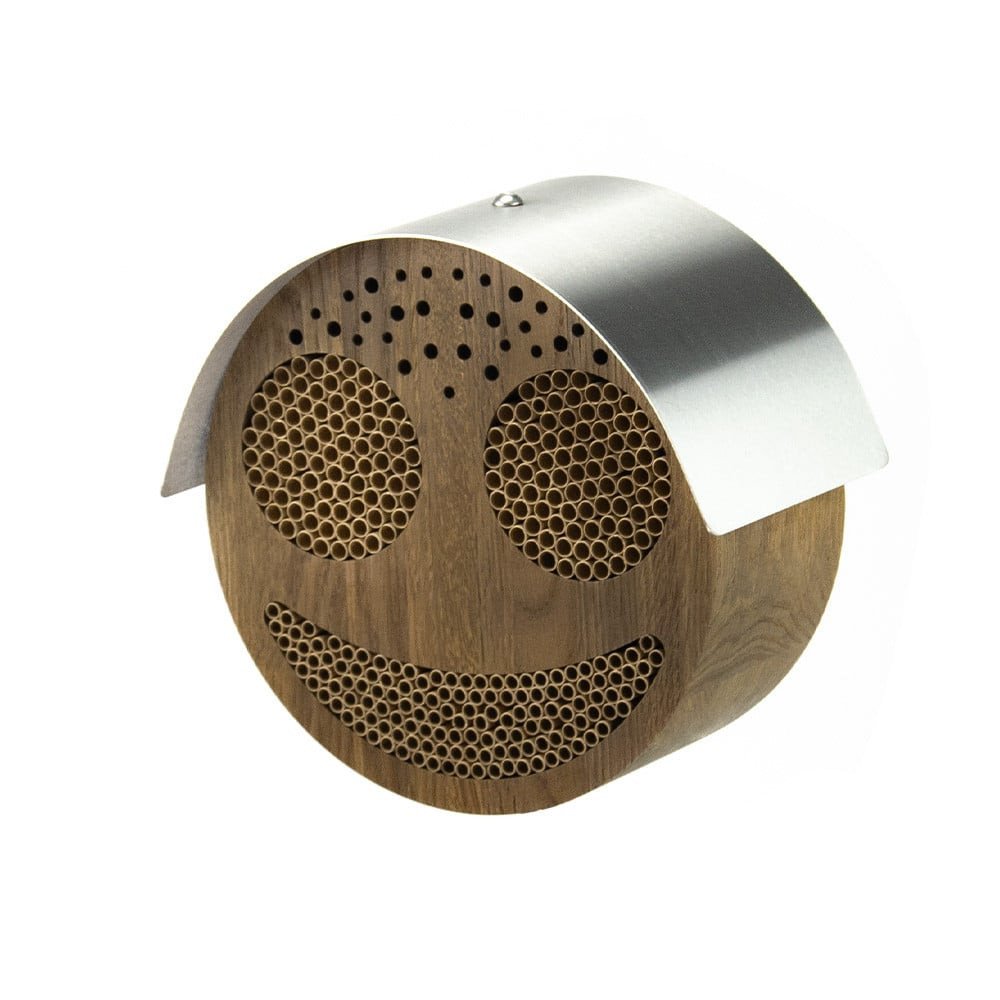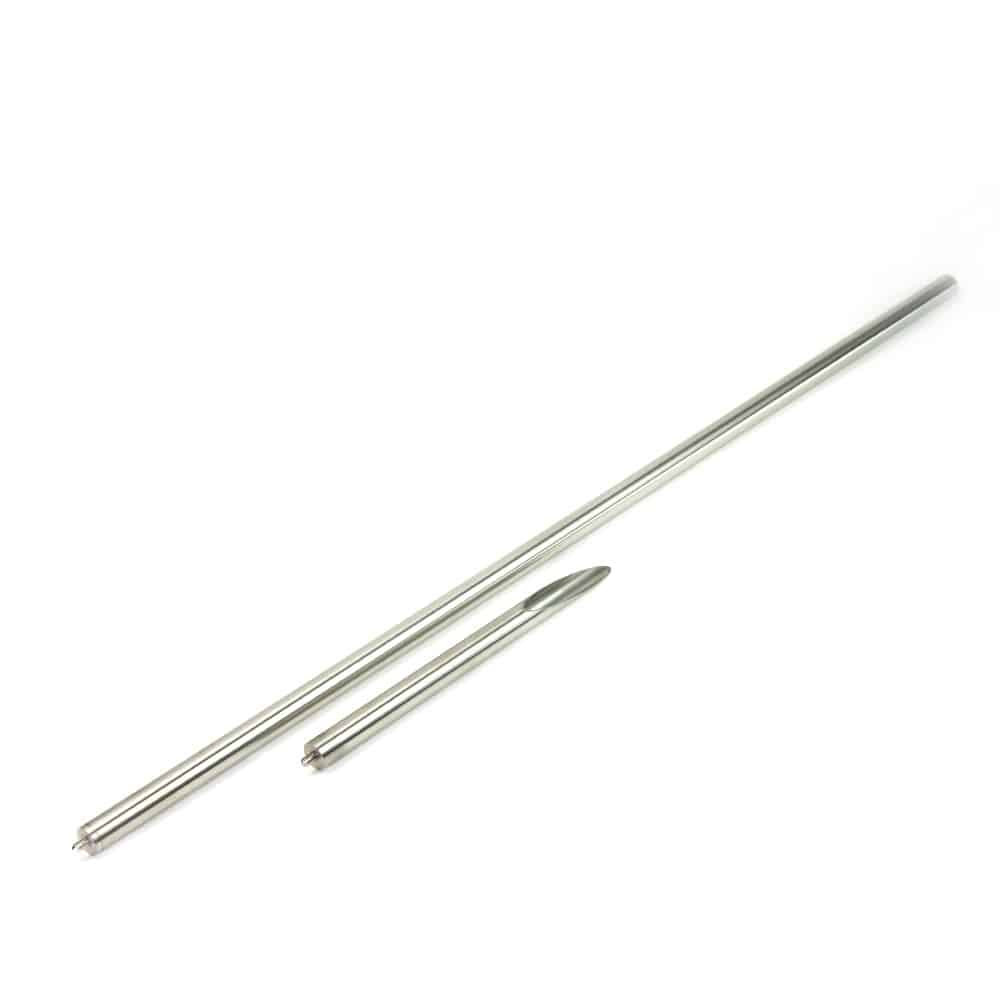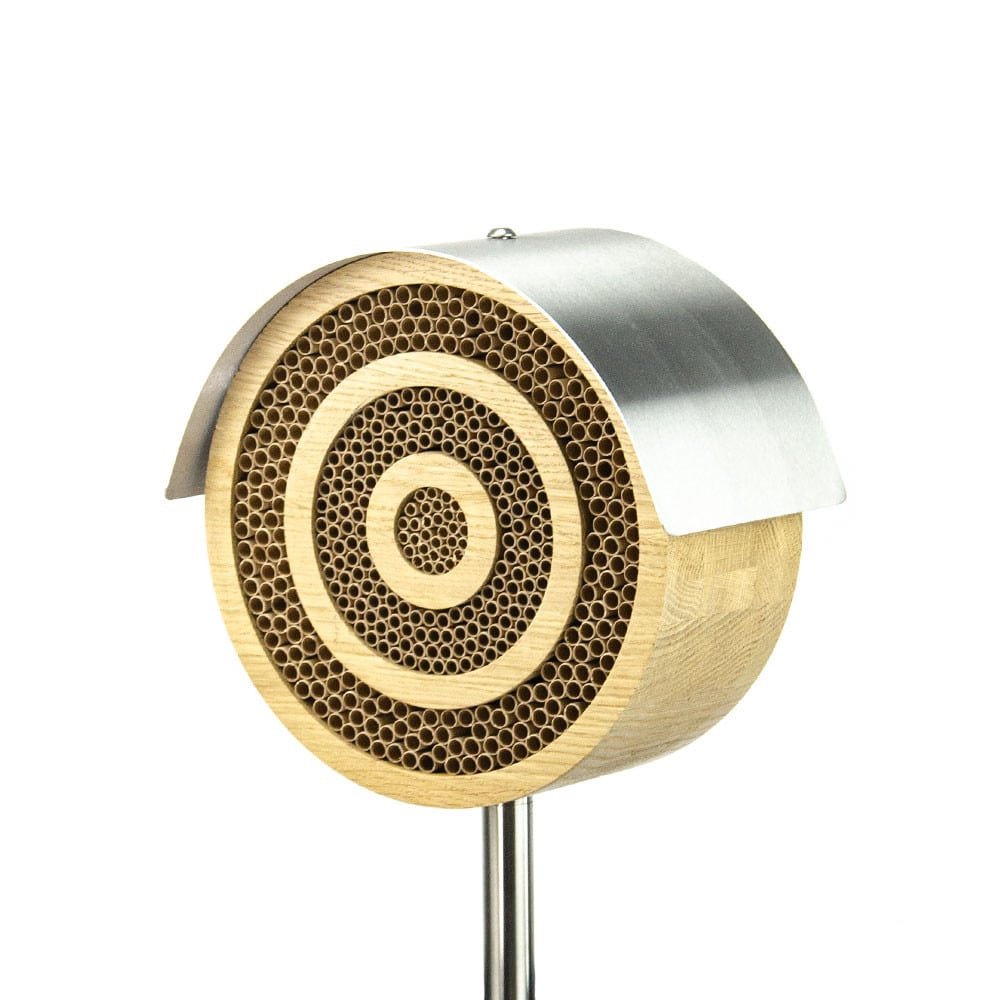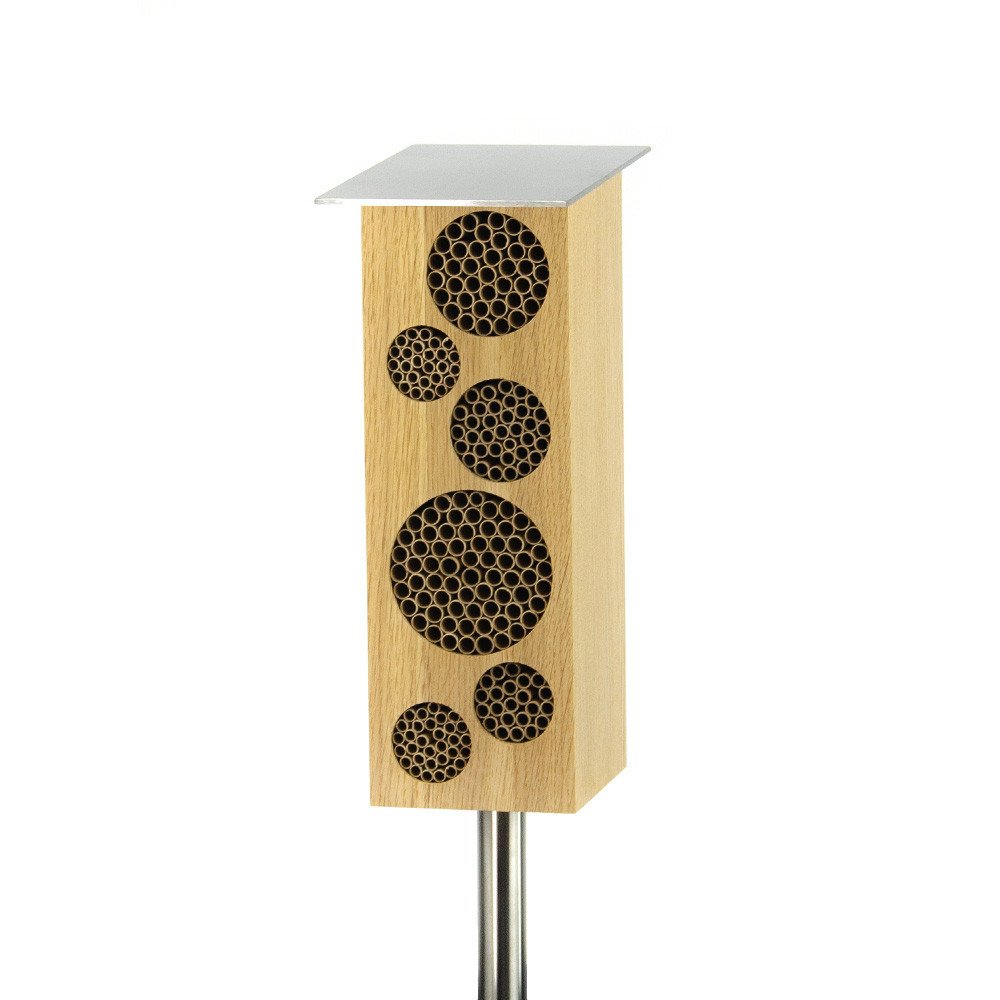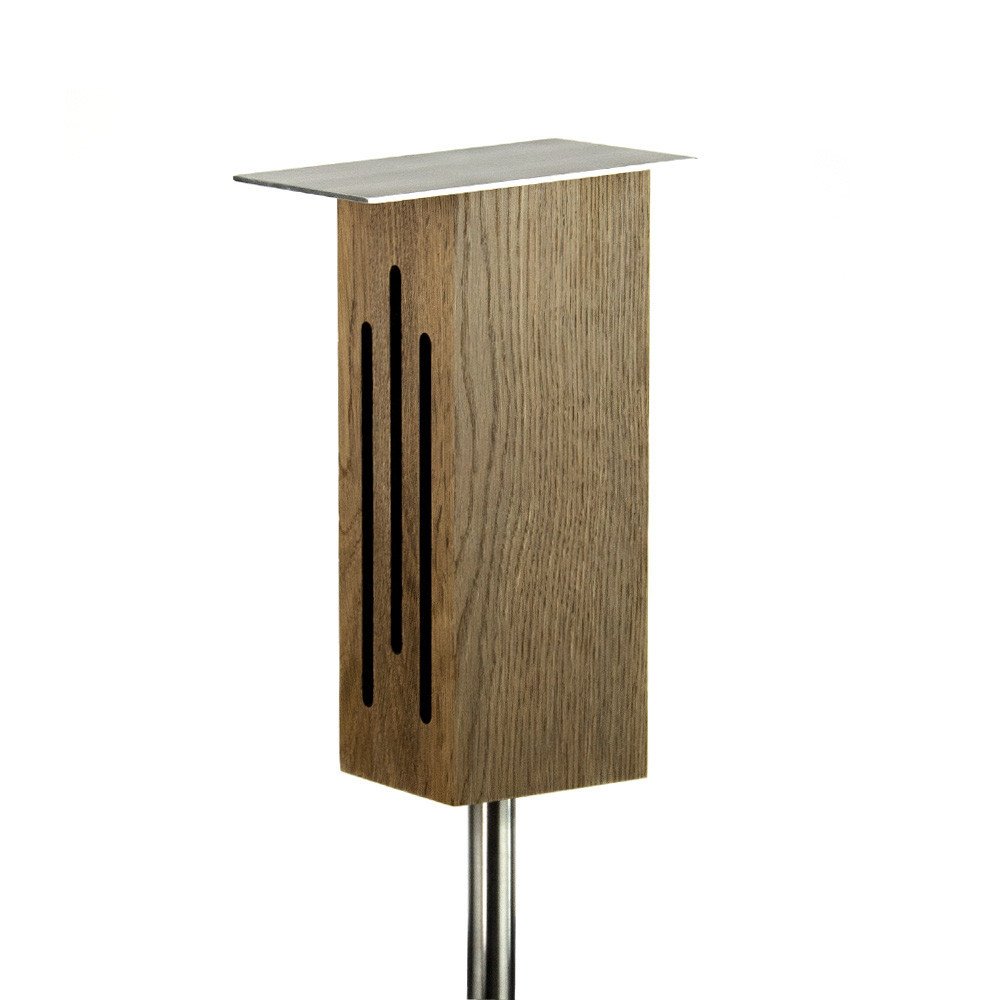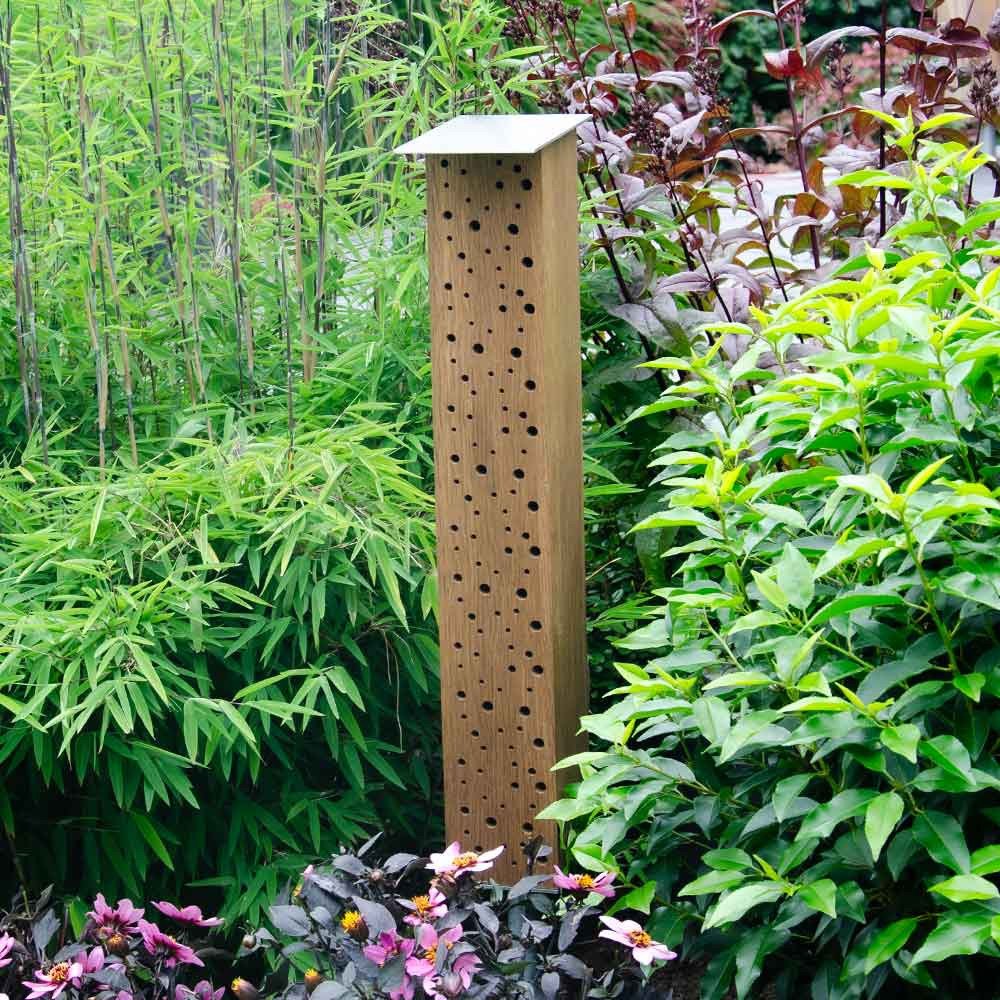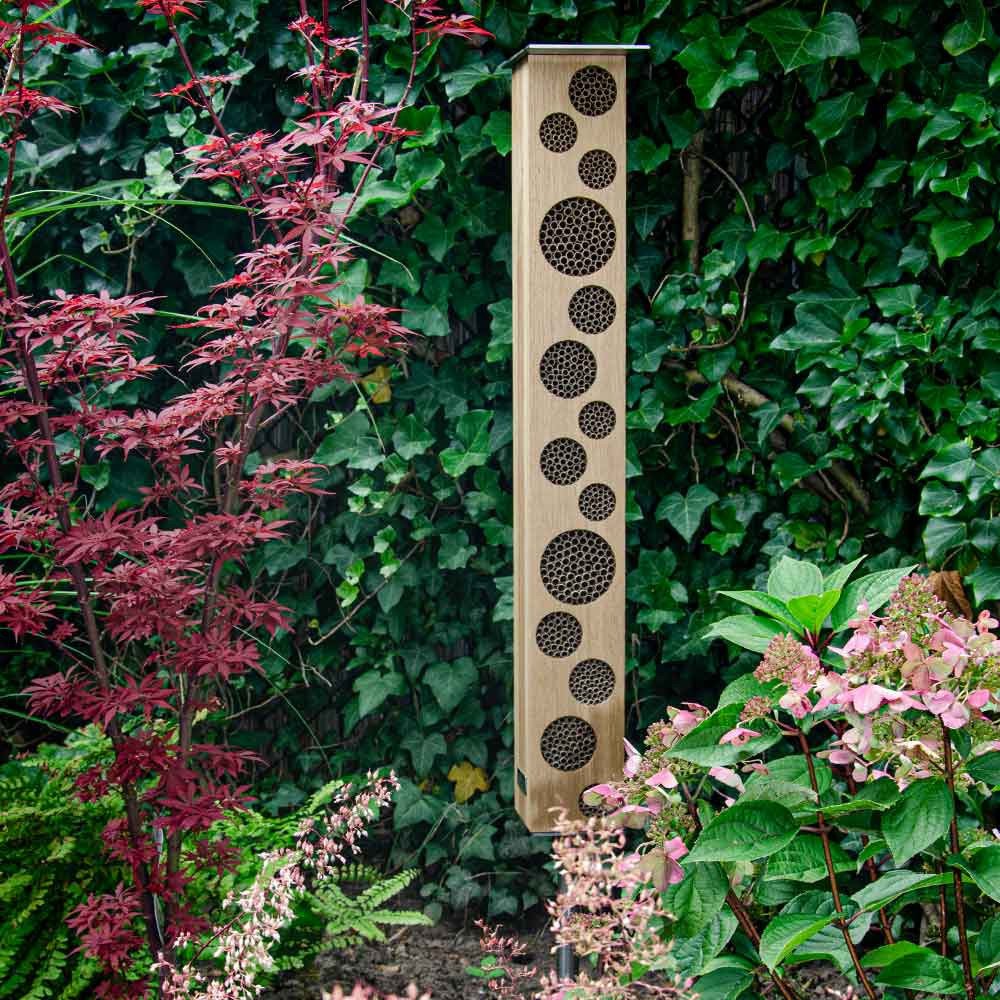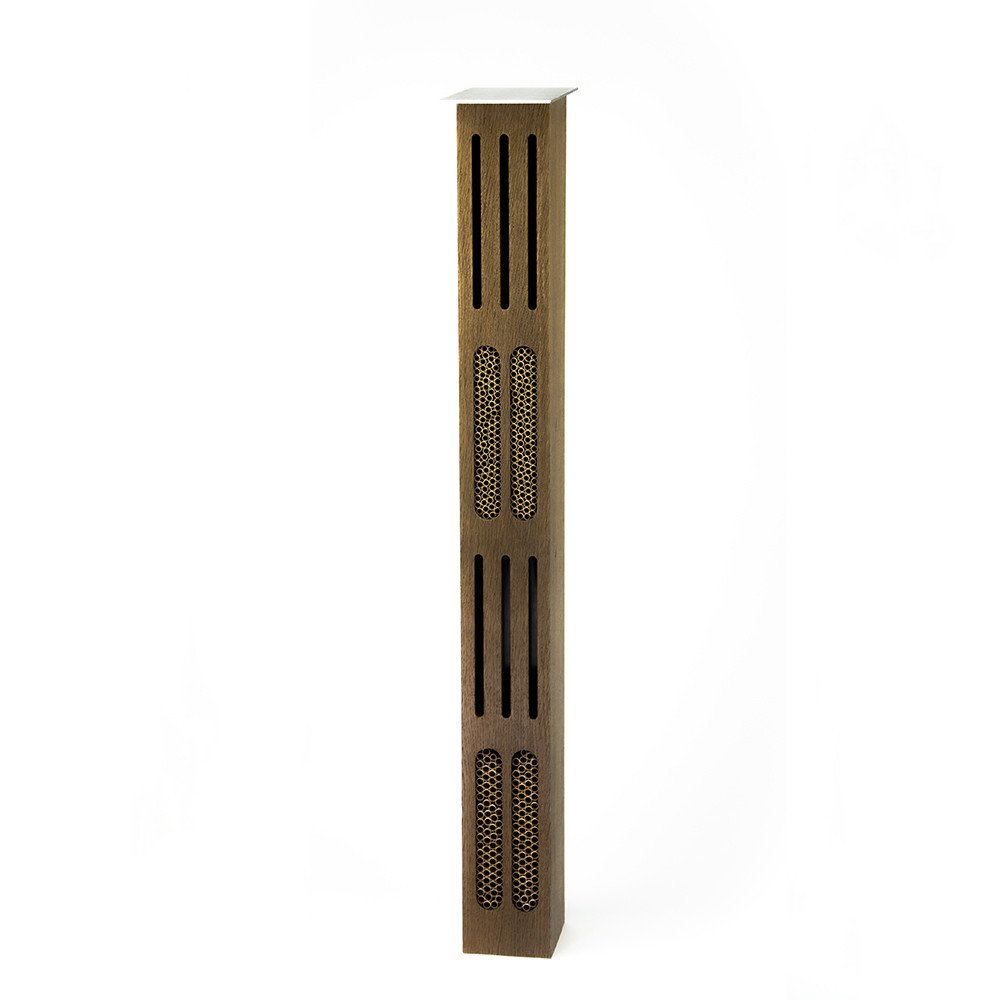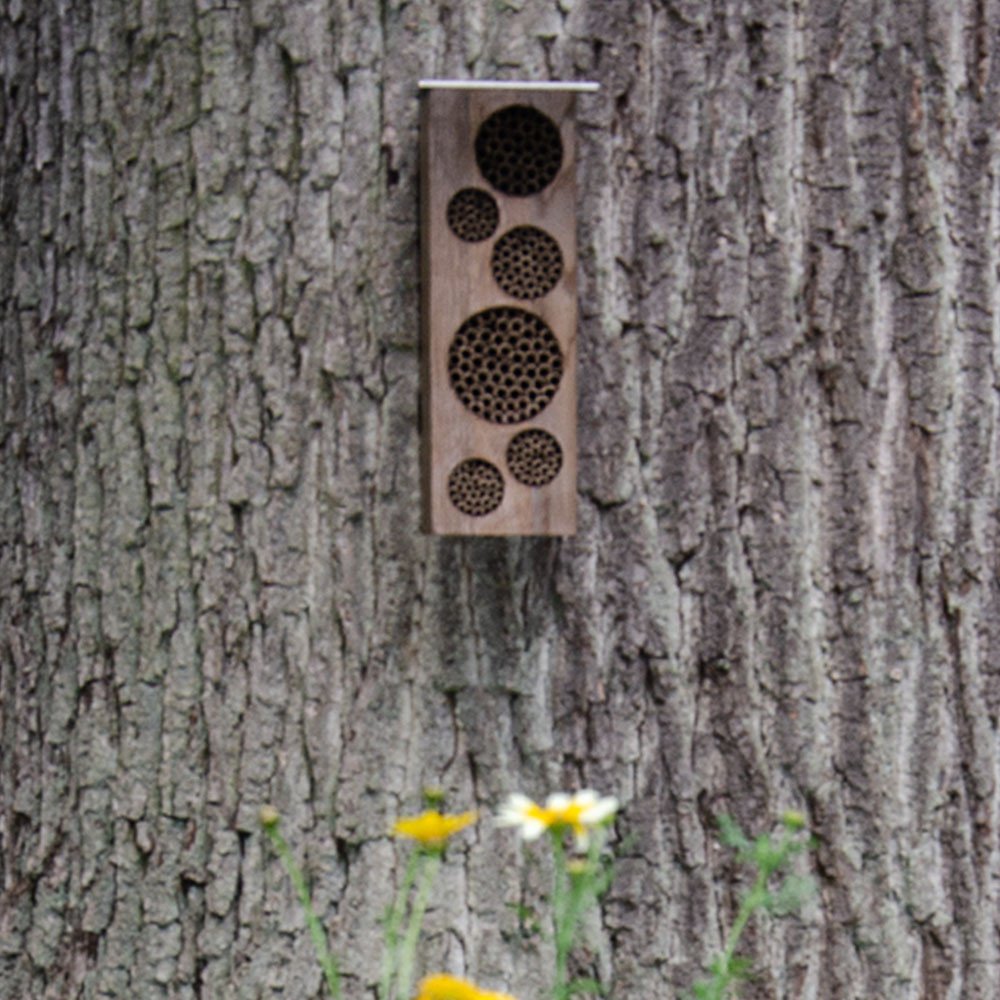
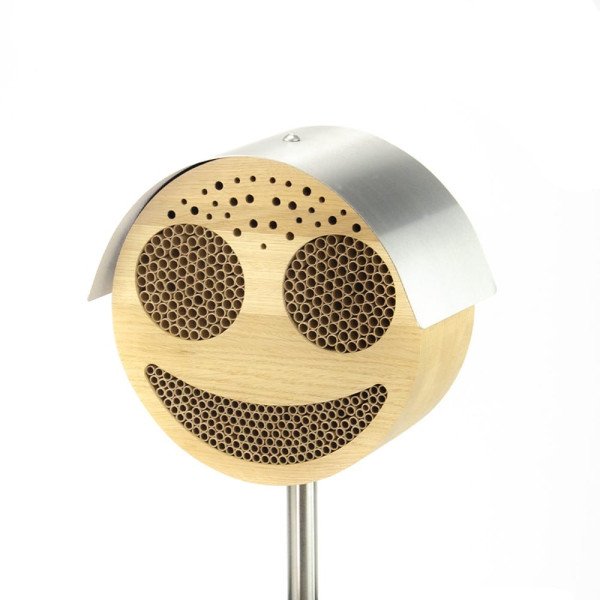

This unique oak bee hotel CASA SMILEY in the shape of a smiling smiley not only offers wild bees a cozy home, but will also...

The two-piece stainless steel rod STEEL with ground spike is the ideal stand for our insect hotels Casa Smiley, Casa Flower, Bee Hostel and Hostel Butterfly. Thanks to its threaded pin at the...


The luxury bee hotel CASA FLOWER in the design of a filled flower offers stylish accommodation for numerous beneficial insects in your garden with over 450 nesting tubs. The stylish design of...


Modern bee hotel BEE HOSTEL is a stylish paradise for bees, providing a safe and protected environment to nest and reproduce. The round cutouts are filled with nesting sleeves in different...


The high quality butterfly house offers a protected space for multiple butterflies and creates optimal conditions for rest, over wintering and egg-laying. It not only provides shelter and...


The BEE TOWER | 65 bee House, made of robust and weather-resistant oak wood, provides the perfect nesting place and shelter for various species of bees and wasps. In today's tidy environment,...


With its impressive height of 80 cm, the BEE TOWER 80 bee house is a bee high-rise!
Filled with approx. 500 nesting sleeves in different diameters, the bee house offers plenty of nesting...


Discover the exclusive luxury insect hotel made of fine oak wood and with a stainless steel roof - a unique oasis for bees and butterflies in one house, an eye-catcher in any garden or...


The insect hotel BEE HOSTEL is an elegant oasis for bees, providing safety and security for nesting and breeding. The modern designed cutouts are filled with nesting tubes of waterproof paper...
INSECT HOUSES
Insect hotels - Protection for our beneficial insects
Insect hotels are a great way to counteract insect mortality and make a meaningful contribution to the environment. These artificially created protective spaces serve as shelter and nesting sites for various insect species that often have difficulty finding natural nesting opportunities, especially in cities. Wild bees in particular, as well as lacewings and hornets, benefit from insect hotels, where they can safely nest and breed and have a safe place to hibernate in the winter. In addition, insect hotels are ideal for observing insects in their natural habitat.
Insects - Threatened with extinction
Insect extinction is a serious global problem. A wide range of insect species are affected by the dramatic insect decline. These include butterflies, bees, bumblebees, ladybugs, more than 560 native wild bees, digger wasps, earwigs and many more. But even species that have not previously been threatened with extinction are becoming fewer and fewer. Insects play a crucial role in our ecosystems by pollinating plants and serving as a food source for other animals. Causes of insect mortality include habitat loss, pesticide use, climate change and light pollution. This is why insect hotels are important to stop the decline of insect populations and promote biodiversity.
Everyone can make a small contribution to support the natural balance in nature. A small flowering strip in the garden provides habitat for numerous insects. Additionally, plant more bee-friendly and native flowers, as exotic plants do not provide food for native insects. Sowing regional wildflowers in the garden or in a raised bed on the balcony also creates support. Also, refrain from using fertilizers and insecticides. Putting up bee and butterfly hotels is another helpful measure to give insects a shelter. We can all take responsibility and make a positive contribution to nature.
Insect hotels - Nesting places for different insect species
Many insect hotels try to bring all groups of insects and other small animals under one roof. However, it is better if the insect hotel focuses on a specific group of insects, such as wild bees, butterflies or beetles.
Different insect species have different nesting habits and preferences. For example, solitary bees prefer cavities such as bamboo tubes or pre-drilled holes, while ladybugs and lacewings prefer small cracks and crevices in logs. Nesting boxes provide a variety of nesting options to meet the needs of a wide range of insects. Insect hotels can be made of a variety of materials, such as wood, bamboo, or clay.
Insect hotels can be made of a variety of materials, such as wood, bamboo or clay. Wood is a popular choice because it exudes natural charm and fits well in the environment.Wood is a popular choice because it exudes natural charm and fits well in the environment. Bee hotels made of wood For the wood should be used seasoned hardwood, because the wood of conifers has a lot of resin and bored resin channels can stick the insects' wings.
Particularly suitable woods are oak, ash, fruit trees and black locust, always well seasoned. In addition, the holes in the wood should not be drilled in the direction of the grain, as slight cracks may appear along the holes, on which the insects will injure themselves.
Nesting tubes - Perfect nesting space for various species of bees
Nesting tubes are available in different materials such as bamboo, straw or paper tubes. The length of the nesting pods should be at least 8 cm -10 cm, the same applies to the direct holes in the wood. For all uccellino bee hotels we use nesting tubes made of waterproof paper with a length of 10 cm. But not only the choice of material is important, but also the hole size of the nest tubes or the diameter of the holes. Ideally, the diameters range from about 3 mm to 9 mm. Anything smaller will be too tight, anything larger will hardly be accepted. Most often taken are the diameters of 4-6 mm, so the perfect bee house should include more of these diameters.
Different bee species prefer the following diameters:
- Masked bee: 2.5 to 4 mm
- Horned mason bee: 6 to 10 mm
- Red mason bee: 5 to 7 mm
- Steel blue mason bee: 4 to 5 mm
- Hole bee: 3 to 3.5 mm
- Scissor bee: 3 to 5 mm
- Wasps: 2,5 to 4 mm
Insect hotels - The right placement
Proper placement of insect hotels is critical for beneficial insects to move in. Insects need warmth to breed and are more active in warm temperatures. Therefore, insect hotels should face southeast to southwest, preferably sunny and protected from rain and strong winds.
It is also important to place the insect hotel near food sources such as flower beds or flowering plants. Hanging a nesting aid without a flower around it unfortunately misses the effect. The food supply is an essential part of successful wild bee conservation in your own garden. Where there are no native plants offering nectar and pollen, no wild bees will settle.
Insect hotels provide protection from natural enemies such as birds or other insects that might eat their brood. The structured nesting structures provide a protected space for insects to lay their eggs without being constantly threatened.
Bee hotel - Build it yourself
Learn how to easily build a small bee hotel yourself. Carefully choose the materials that will meet the needs of the bees.
- One way is to put bamboo tubes in a tin can. Make sure the edge of the can is protected from sharp edges, for example, by using colored or other tape. Drill a hole for a string, secured at the end with a knot to prevent it from slipping through. Fill in the bamboo tubes and hang the bee hotel. You can also paint the can for a more vibrant look.
- Another simple method is to drill holes in a piece of seasoned wood. Keep a space of about 1.5 cm between the holes and make sure they have a minimum depth of 8 cm, ideally 10 cm. Note that drilling small holes at this length can be a bit more difficult and a drill bit can break easily.
- You can have scrap pieces of wood cut to size at the hardware store and create a frame from them, either by gluing or screwing. Attach a suitable hanger and fill the frame with straws, bamboo tubes or other nesting tubes.
TIP: If the bee hotel is left open in the front and back, you should seal one side of the nesting tubes with clay. Make sure the bee hotel is not too wobbly in windy conditions to prevent the nest tubes from falling out. Bees prefer stable homes.

